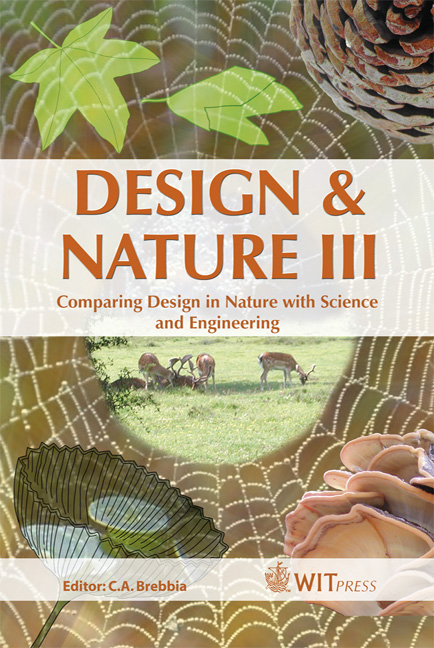Structural And Torsional Properties Of The Trachycarpus Fortunei Palm Petiole
Price
Free (open access)
Transaction
Volume
87
Pages
10
Published
2006
Size
809 kb
Paper DOI
10.2495/DN060181
Copyright
WIT Press
Author(s)
A. G. Windsor-Collins, M. A. Atherton, M. W. Collins & D. F. Cutler
Abstract
The Trachycarpus fortunei palm is a good example of a palm with a large leaf blade supported by a correspondingly large petiole. The way in which the material and functional properties of the petiole interact is analysed using engineering and botanical methods with a view to understanding how the petiole functions from a structural standpoint. Initially, the histological aspects of the petiole are analysed at a microscopic level from sections of the petiole taken at regular intervals along its axis, in order to determine the density and location of the vascular bundles. A modified torsion rig was used to measure the torsion and shear stress variation along petiole sample lengths. Knowledge of vascular bundle placement within the petiole sections and their torsional loading characteristics contribute to understanding the petiole function. Keywords: palm petiole, vascular bundle, axial torque, geometry, rigidity modulus, composite, material properties, Trachycarpus fortunei, torsion, shear stress. 1 Introduction The largest blades in the plant kingdom may be found in Arecaceae (the palm family) providing a reason for exploration into their structure and engineering properties. The palm Trachycarpus fortunei was chosen because of its overall large size (up to about 12m high), and its correspondingly large leaves of up to one metre in diameter [1]. This palm is native to China and the Himalayas, thriving in temperate regions and is one of the world’s hardiest palms. A popular name for it is the Chinese windmill palm because its leaves are stiff and fan-
Keywords
palm petiole, vascular bundle, axial torque, geometry, rigidity modulus, composite, material properties, Trachycarpus fortunei, torsion, shear stress.





